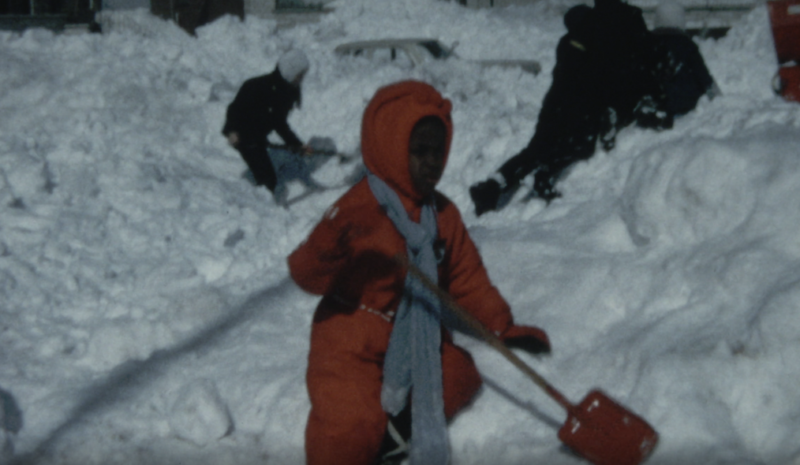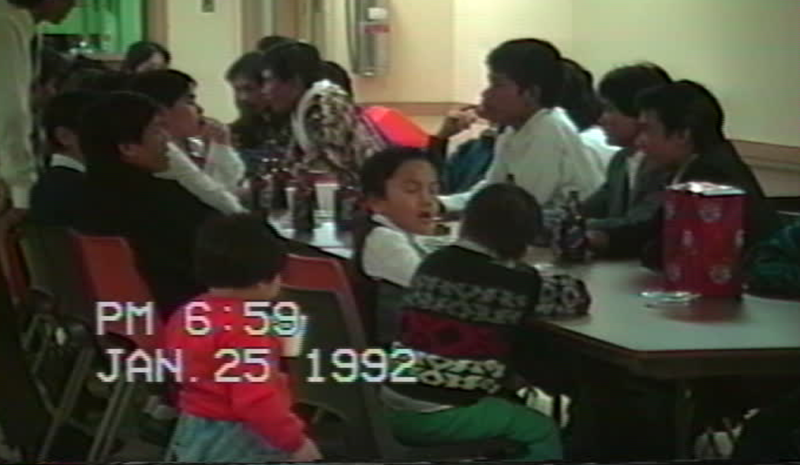Home Made Visible: home movies, archives, and IBPOC communities
15 October 2019 – Katrina Cohen-Palacios
video, film, media, digitization, archives, everyday life, Canada, diversity, libraries, 2019 archives month series
Editors’ Note: This is one in a series of posts about the intersection of archives and public history that will be published throughout October, or Archives Month in the United States. This series is edited by National Council on Public History (NCPH) board member Krista McCracken, History@Work affiliate editor Kristin O’Brassill-Kulfan, and NCPH The Public Historian co-editor/Digital Media Editor Nicole Belolan.
From 2017 to 2019, Toronto, Canada’s, Regent Park Film Festival project set out to amplify the self-representation of Indigenous, Black, and people of colour (IBPOC) communities in Canada’s public memory through engagement with archives, artistic creations, and public programming. As old film reels and videotapes threaten to fall apart over time, the Home Made Visible (HMV) collection, based at York University Libraries (YUL), preserves and celebrates the important history captured in-home movies by digitizing nearly three hundred home movies. As the project comes to an end, families who may have never seen their communities represented in archives, have donated their intimate family videos to the collective national memory and historical narrative.
Above, you can view a short video promoting Home Made Visible. The video is a montage of home movies featuring adults and children at dinner tables, dancing, making a video recording, trick-or-treating, shoveling snow, and on vacation.
During the first phase of the project, artistic director Ananya Ohri led the HMV team to build relationships with potential donors across Canada. “So much of the stories that are told about Indigenous and visible minorities [in archives] are about adversity, and those are important stories to tell,” said Ohri. “What is also important is the strength, the flare, the play, the joy that makes up who we are, and home movies are a great way to remember that.” The HMV collection documents the everyday life of IBPOC communities including snowstorms, weddings, picnics, holiday celebrations, cultural traditions, numerous birthdays, video letters to grandma, school performances, and family vacations across the globe in a multitude of languages and representation from nearly all provinces with footage captured over six decades.

Children play and help shovel out after Montreal’s “snowstorm of the century” in 1971. Image credit: the Valcin family and York University Libraries, Clara Thomas Archives and Special Collections, Home Made Visible collection
A few months after the call for participants, the HMV team reached their initial goal of digitizing fifty video carriers and set a new goal to help fifty families from across the nation access their home movies. Most donors heard about the project through word of mouth and only a handful withdrew interest after learning more details about the project. HMV then interviewed the remaining thirty-nine donors to curate their donations and collaboratively write descriptions of their home movies. This collaborative approach empowered community members and compounded the emphasis of self-representation in the archives. These descriptions differed from the stoic and sterile archivist descriptions that I would have written, because the embedded personal memories and contextual information in the HMV descriptions are not apparent from simply viewing the footage.
My responsibilities as the archivist representing YUL on the HMV team involved liaising with the university archivist, the director of digital scholarship and infrastructure, the digital systems librarian, and an application support specialist in order to ingest the movies into our digital repository and descriptive database, provide expertise on metadata (primarily captured by the HMV team), and review the details of the participation forms (copyright, ownership, etc.). Including archivists during the project design facilitated YUL’s role to ensure the long-term preservation and access to these videos for future generations.
The project’s success may be contributed to the efficient and effective use of resources with partners focusing their strengths: RPFF’s building community connections, YUL’s providing long-term access to information, and Charles Street Video’s supporting media artists. While beneficial, the divide and conquer approach created challenges. For example, RPFF would act as a liaison for questions and answers about donating material because the archives did not interact with participants until after material was donated. In hindsight, to help build donor trust and reduce concerns, an archival donation FAQ sheet by explaining archival donations and the transfer of physical ownership, the retention of copyright, and the possibilities of access restrictions should have been provided by YUL.
Some project challenges were easier to solve than others. In the original design, HMV had one digitization partner located in Ontario. However, it soon became apparent that donors were concerned about their home movies being damaged and destroyed if the material were shipped across the country. So, HMV expanded its partnerships to include organizations located in Nova Scotia, Quebec, and Alberta. In the end, most donors participated in the project because of connection to—and their trust of—the RPFF through their network of family, friends, and colleagues.
Another challenge focused on consent. What protocol should we follow when families could not easily access the technology to preview their VHS and miniDV tapes before providing consent to archive? What if only some family members who appeared in a particular video agreed to their images being donated to an archival institution? Fortunately, HMV baked these concerns into their project procedures. Participants could digitize up to five media carriers, and in exchange, they were asked to donate a minimum of five minutes of footage. This flexible arrangement suited issues around privacy and protected intimate family moments with participants, such as Trinh Nha Truong who was happy to donate the entirety of her VHS cassette tape because “she wanted to show other Canadians that ‘our people live in Canada too.'” Anther participant chose “to contribute a clip that didn’t centre people but a place” to protect the family’s privacy.

In 1992, members of the Truong/Tram family celebrate the one-month birthday of the newest member of the family. Image credit: Truong/Tram family and York University Libraries, Clara Thomas Archives and Special Collections, Home Made Visible collection
In addition to preserving historical records from across Canada, HMV has been committed to and involved with the research and dissemination of historical research through public programming. The second phase of the project involved seven commissioned artistic works that reflect on the power of reclaiming and personalizing the practice and places of archives. These works premiered at the 16th Annual Regent Park Film Festival on November 2018 and were included in the third phase of the project: a tour across Canadian public libraries to start dialogues about how diverse histories converge on this land. The tour included workshops on topics including zine-making, oral storytelling, free-writing, postcards as personal archives, and stop-motion filmmaking.
HMV is not only an inspiring project because it bridges the archival and artistic community together, to the enrichment of both communities, but also because of its demonstrated ability to use collaboration to reach a broad public audience.
Funding for the Home Made Visible project, including digitization of footage, was provided by the Canada Council for the Arts’ New Chapter program.
~Katrina Cohen-Palacios is a media archivist at the York University Libraries, Clara Thomas Archives and Special Collections.



